MEL VALENTINE VARGAS | THE GRAPHIC STORYTELLER. Columbia graduate transforms challenges into visual storytelling.
BASED IN CHICAGO, Mel Valentine Vargas, 25, is a graphic novelist and illustrator. Both parents are Cuban immigrants. Born in Miami, Vargas graduated from Columbia College Chicago in 2020 and identifies as Queer Non-Binary White Latine. Vargas’s preferred pronoun is ‘they’ and says their artwork focuses on representing Queer and Latine bodies of all shapes through visual storytelling.
What inspired you to become an artist?
[TV] shows growing up. I’ve always really, really liked animation. Every time I would watch an animated show when I was little, I used to like watching it and drawing at the same time. So definitely, like Cartoon Network and Studio Ghibli.
When did you realize you wanted to be an artist?
I always thought of myself as a little bit of an artist. I knew I wanted to pursue it as a but I didn’t allow myself to because immigrant parents are always like, ‘You gotta get a good job!’ Their perception of a good job is one that’s going to make you a lot of money. For a long time, that was really hard for me to come to terms with. I actually went to community college for two years before I went to Columbia, to study for a biology degree. I used to love it. I would spend all day at school. Then I would come home and I would only want to draw. It was the one thing I would think of all day long.
I was like, ‘This is no way to live life… I should be actually pursuing art if that’s what I’m wanting to do with all my free time.’ A year and a half into community college, I actually decided to pursue it as a career.
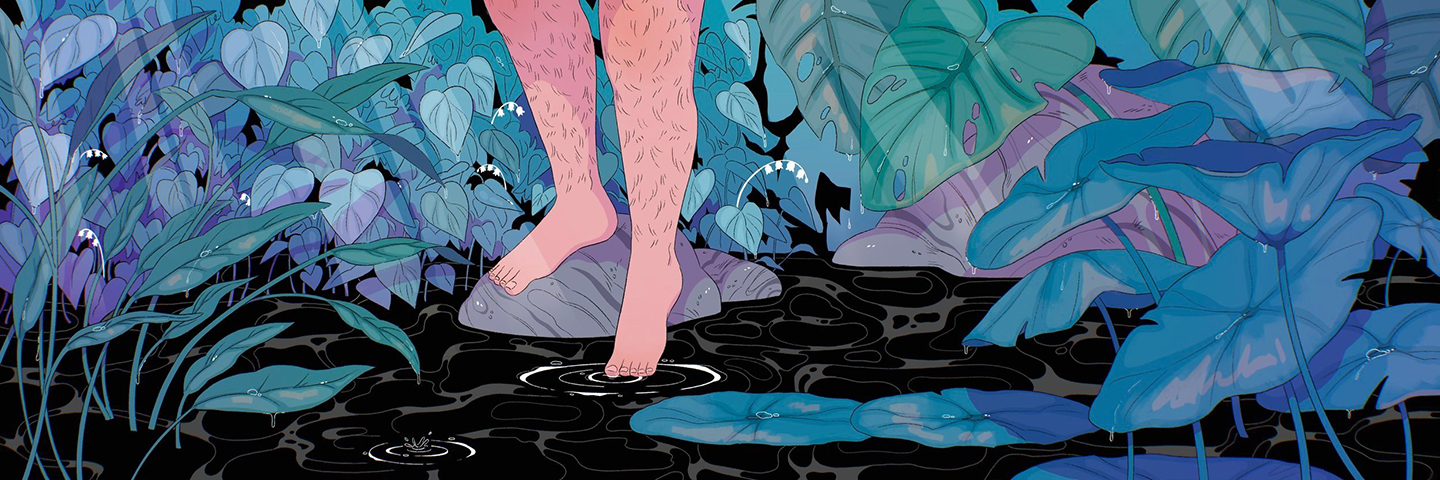
Did your parents approve of your choice to pursue art?
It was really scary to admit to them that I just wanted to change career paths. It was very much of them asking, ‘How are you going to make money off of this?’ and ‘Making art is hard.’ Their perception of art is of fine art, like things that are going to be in a museum, and I knew that’s not what I wanted to do. From the point that I entered Columbia, I knew I wanted to be doing graphic novels and comics. It was hard to even explain that to them. To immigrants, a good job is something that is very lucrative. And they don’t see art that way. To them it’s a risk… They did [eventually] come around.
What medium do you mainly work in?
I do 100% of my work on my iPad on Procreate.
How would you describe yourself and your culture?
I’m a Queer Latinx Chicago-based graphic novelist. [These] three things that are super integral to me because I am Queer and Latinx above everything else. Latinx is super important to my identity especially with having two immigrant parents. I learned Spanish before I even learned English. I grew up in Miami too, which is very heavily populated by [Hispanics,] specifically Cubans.
I don’t even accept doing jobs for books if the main character isn’t either Hispanic or queer. It just doesn’t feel like a job that needs my attention. When I’m drawing I try to make the characters really diverse. It’s very integral to my identity and how I view the world.
How has your identity as a Latine influenced your art? How does it come out in your work?
Oh, my God, it influences it so much. When I was younger really badly wanted to be blond. Not that Hispanic people can’t be blond, but [Hispanics are] very rarely portrayed [in media]. It’s usually not a great caricature of how it is like being Hispanic. I remember growing up not having the world really be aware about Hispanic and Latinx culture; what a large and rich melting pot everything [is and at the same time how] cultures can stand on their own.
I’m trying to draw things that a younger me needed growing up. A lot of the time minorities are not portrayed the way that they should be or not portrayed at all. It’s [also] really great to see now a lot of new media portraying Hispanics that are different. Also having Latinx based shows showing Afro Latinos, who don’t often get a spotlight. It’s really important to make sure that my art is diverse and helping somebody be seen that usually isn’t seen.
I also grew up hairy and I’m still very hairy too, which is something that I struggled with. Not every Latinx person is super hairy, but a lot of us are. I was a lot more like brown growing up too, and you [feel] alienated.
In Florida, Disney is a big thing. None of the princesses look like me and I loved Ariel, but I looked nothing like Ariel. That seems so small, but when you are a kid, it really messes with your view of who you are as a person. I have always been plus size and that is important in my art and exploring different body sizes. Growing up and not having that really sucks and it really changes your perception of you and your self-esteem.
“I love being queer and Latinx and fat and writing about those characters! And sometimes people want to see a queer fat Latine do magic.”
How has your family influenced your art?
In a regular way, how your culture and how your past experiences shape who you are as a person, it’s kind of impossible for it not to shape your art.
What’s your inspiration?
Other artists like animated media and Studio Ghibli. Also, other minority artists. One of the main reasons that I still go on Instagram is to look at other people’s It’s such a big inspiration to see my peers making work.
What’s your motivation?
Representation. I mentioned that I won’t—and my agent knows this—accept work if the main character is not either Hispanic or queer or both. My motivation [also] is, ‘Is it fun?’ and ‘Does it fulfill my goal of wanting to tell stories that make people feel seen?’
What is it like being a Latine artist in Chicago? How has it shaped you as an individual?
Honestly, it’s pretty great. Chicago is a super diverse city. It’s very liberal too, which gives me and a lot of other queer people and minorities freedom and a lot of opportunities, especially since I am originally from Florida—a not so liberal place. It’s great to live in a city where my friends can go to places like Zine Mercado which is for Latinx artists. There’s always space for more representation but compared to other spaces it has been great. It’s really shaped me, and I’ve met a lot of amazing people.
How do you make your art accessible to an audience?
I post most of my art. I can’t post my graphic novel that has to be released as a book. I table occasionally [at festivals and conventions.] If an opportunity is offered to me that doesn’t pay me money but I like it, I’ll do it. I’ve done a cover and an inside image for South Side Weekly.
What is missing from the art world and how does that fill that space or gap?
More representation. I’d like to think that my art fills a space for older queer people and older Latinx people who want stories to connect to that aren’t very basic.
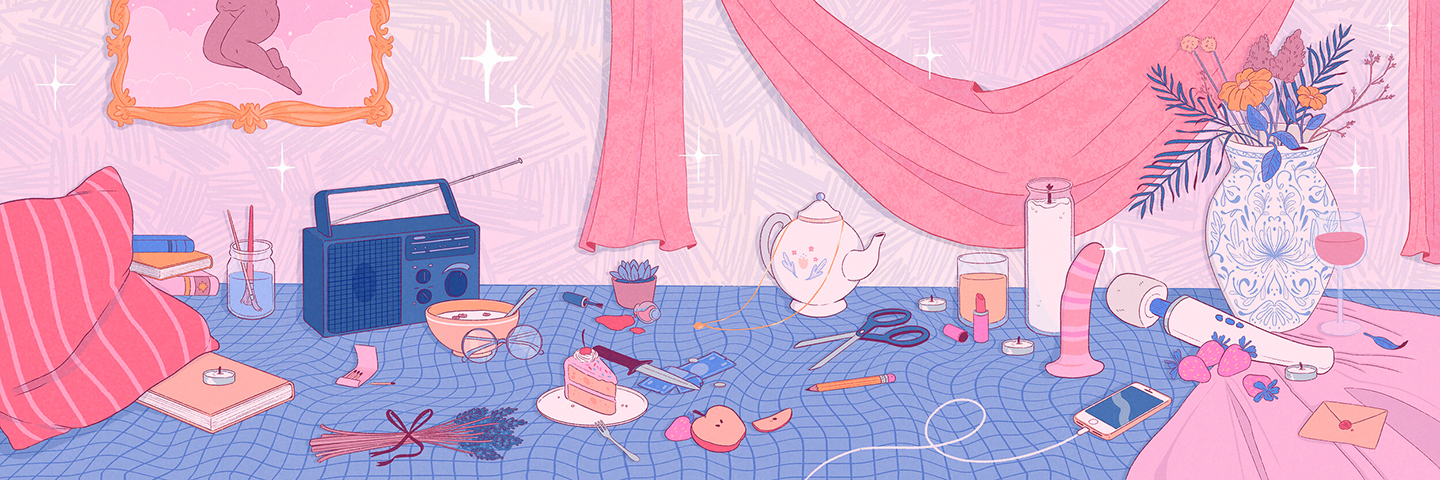
What challenges do you face?
I have so many. People don’t usually want to publish queer stories. Thankfully, it’s more widely accepted than when we were children, but even now, it’s kind of hard to sell them. It’s the same thing with Latinx stories, especially when you mush them both together. When I am pitching a graphic novel that I want to write myself, people have to buy the idea. So, I put this whole project together that involves character drawings, an overview of the story, a summary, a couple of pages. People don’t want to buy that idea because they don’t think it’s gonna sell. Thankfully, I do see a change and I think it’s getting better and better. There’s still a long way to go.
What do you think of the term Latinx to identify people of Latin American background?
I think it’s cool. I don’t have any problem with it as somebody who is non binary. I’m always down for terms that make people feel included. People have every right to choose what they want. There’s a lot of discourse online about labels that people are allowed to use, not just in the Latinx, but in the queer community too. So, if you want to use Latinx—use Latinx. If you want to use Latine—use Latine. Both are super valid and important. It just depends on what you want to use because not all Latinx people speak Spanish, so maybe Latinx makes more sense to them because they do use the X in the English language.
Who is your target audience? How do you want it to be received?
People like me who are Queer, Latinx or Latina. But honestly, anybody who can feel seen by the same kind of stories of being an outsider. Also for people who aren’t minorities but by seeing this art, it can make them understand even just a snippet of the life of minorities like me. I love being Queer and Latinx and fat and writing about those characters! People aren’t their oppression like you said, and sometimes people want to see a queer fat Latine do magic.
How do you build your platform as an artist? Do you use social media?
I did use social media more in college than now because it is a free way to spread your art. I’m lucky enough that I have an agent so I don’t need to spread my work for money that way.

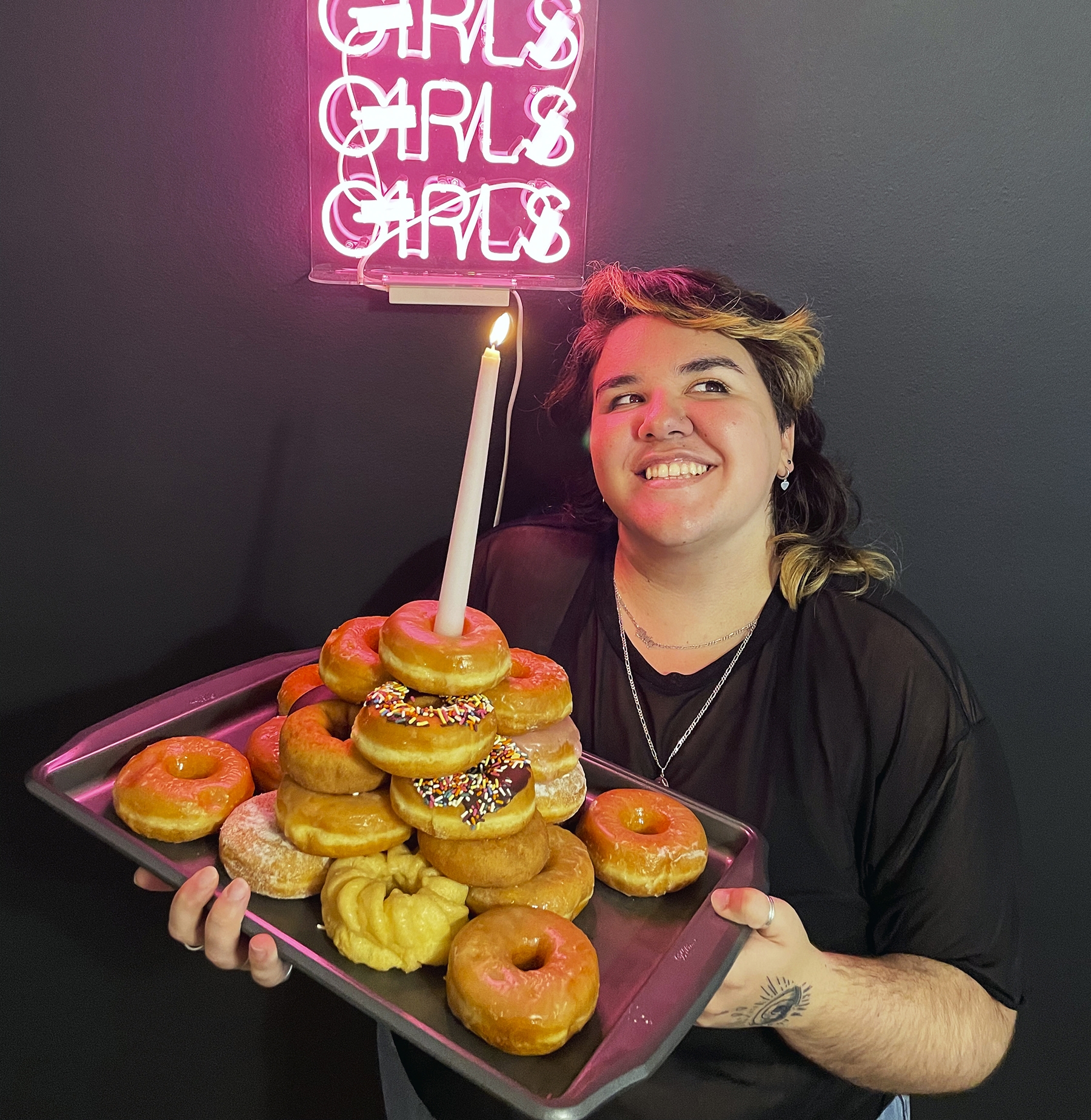

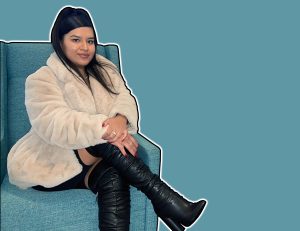
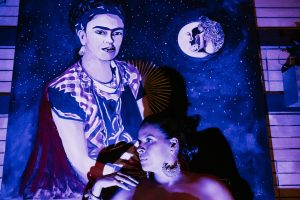
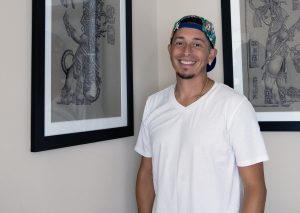
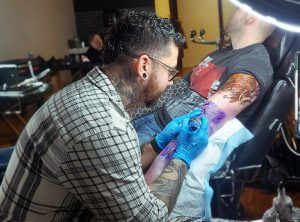
Be First to Comment